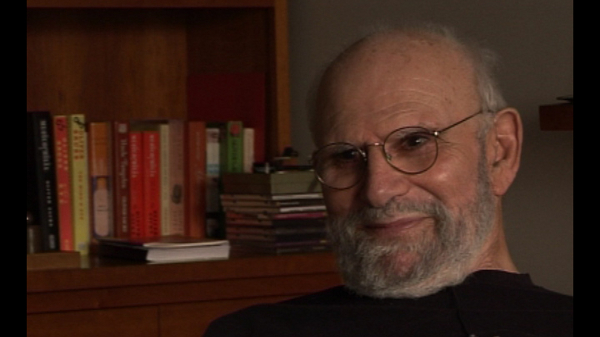NEXT STORY

Isolation, feeling unique and visual neuroscience
RELATED STORIES

NEXT STORY

Isolation, feeling unique and visual neuroscience
RELATED STORIES


|
Views | Duration | |
|---|---|---|---|
| 181. The case of the colour-blind painter | 1 | 1035 | 06:38 |
| 182. Ralph Siegel | 339 | 01:31 | |
| 183. Collaboration with Ralph Siegel and Bob Wasserman | 298 | 01:52 | |
| 184. How the colour-blind painter saw the world | 1306 | 01:57 | |
| 185. Colour blindness, Isaacson and achromatopsia in Pingelap | 549 | 06:20 | |
| 186. Ralph Siegel's interesting work | 255 | 02:10 | |
| 187. Isolation, feeling unique and visual neuroscience | 2 | 318 | 05:13 |
| 188. Gerald Edelman's work: reinventions and Neural... | 555 | 05:41 | |
| 189. Gerald Edelman's theory of neural Darwinism | 623 | 01:52 | |
| 190. Where is the individual amongst analogies for the brain? | 407 | 01:57 |


Ralph was a blend of... of experimental physiologist and theoretical and computational neuroscientist. In particular, he worked with monkeys, and these monkeys had electrodes implanted in their brain, and... and he could observe in great detail how they responded to colour and to other visual stimuli. When he realised how ill he was, he changed from writing scientific papers, which were highly esteemed; he wanted to write some more personal essays. And these will be published posthumously under the title of Another Day in the Monkey’s Brain. I... we so hoped we could get a copy to Ralph while he was still able to appreciate it, but alas, the... the brain tumour moved too fast. But Ralph would immediately pull me into a physiological discussion: what part of the brain is involved, what is going on, can we simulate this on a computer. Yes, another piece of work I did with Ralph had relation to Migraine. He was fascinated when I told him about the complex patterns one could see in migraine, not just the zigzag, but hexagons and geometrical patterns of many, many shapes, including fractal patterns. And Ralph was able to simulate these, some of these, on... on a nerve net in a computer. And this really enabled me to... to add a significant part, which I co-authored with him, to my... to my Migraine book.
Oliver Sacks (1933-2015) was born in England. Having obtained his medical degree at Oxford University, he moved to the USA. There he worked as a consultant neurologist at Beth Abraham Hospital where in 1966, he encountered a group of survivors of the global sleepy sickness of 1916-1927. Sacks treated these patients with the then-experimental drug L-Dopa producing astounding results which he described in his book Awakenings. Further cases of neurological disorders were described by Sacks with exceptional sympathy in another major book entitled The Man Who Mistook His Wife For A Hat which became an instant best seller on its publication in 1985. His other books drew on his rich experiences as a neurologist gleaned over almost five decades of professional practice. Sacks's work was recognized by prestigious institutions which awarded him numerous honours and prizes. These included the Lewis Thomas Prize given by Rockefeller University, which recognizes the scientist as poet. He was an honorary fellow of both the American Academy of Arts and Letters and the American Academy of Arts and Sciences, and held honorary degrees from many universities, including Oxford, the Karolinska Institute, Georgetown, Bard, Gallaudet, Tufts, and the Catholic University of Peru.
Title: Ralph Siegel's interesting work
Listeners: Kate Edgar
Kate Edgar, previously Managing Editor at the Summit Books division of Simon and Schuster, began working with Oliver Sacks in 1983. She has served as editor and researcher on all of his books, and has been closely involved with various films and adaptations based on his work. As friend, assistant, and collaborator, she has accompanied Dr Sacks on many adventures around the world, clinical and otherwise.
Tags: Another Day in the Monkey's Brain, Ralph Siegel
Duration: 2 minutes, 10 seconds
Date story recorded: September 2011
Date story went live: 02 October 2012